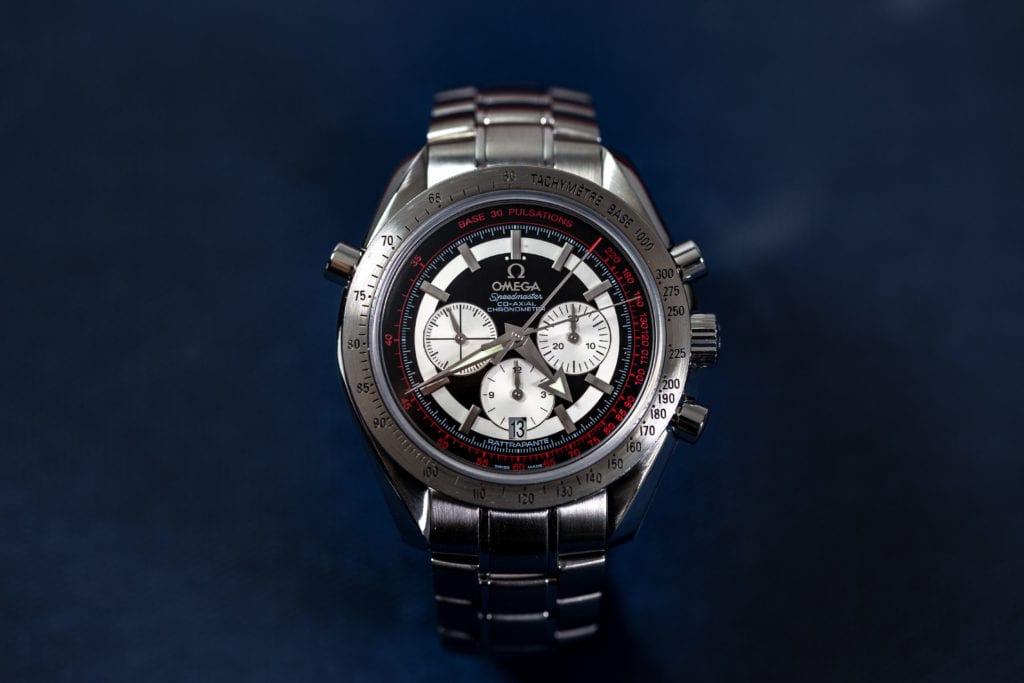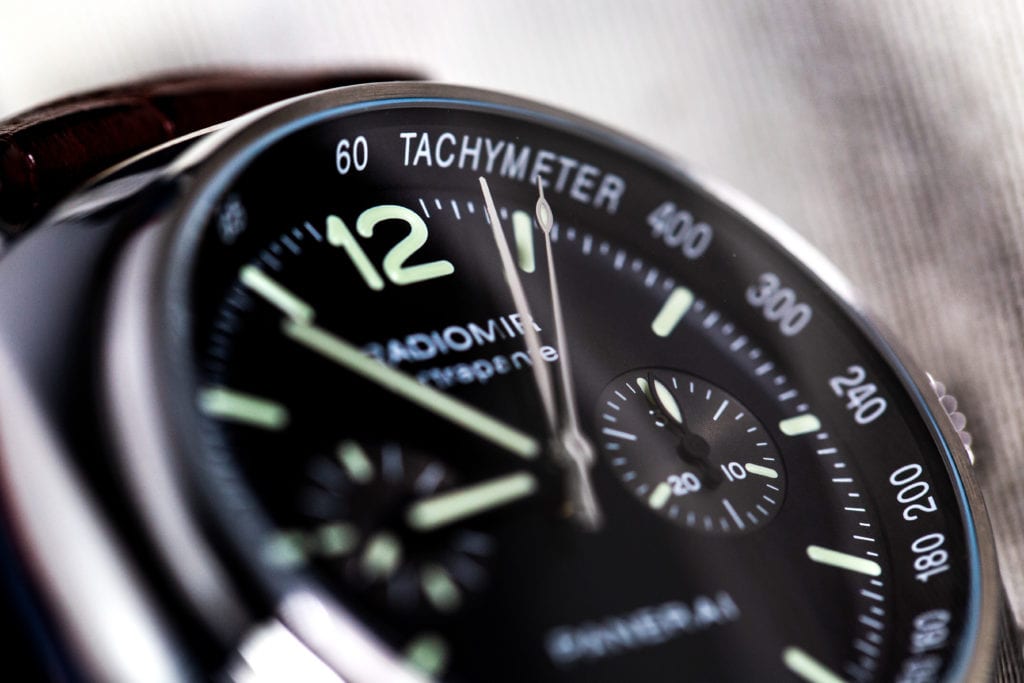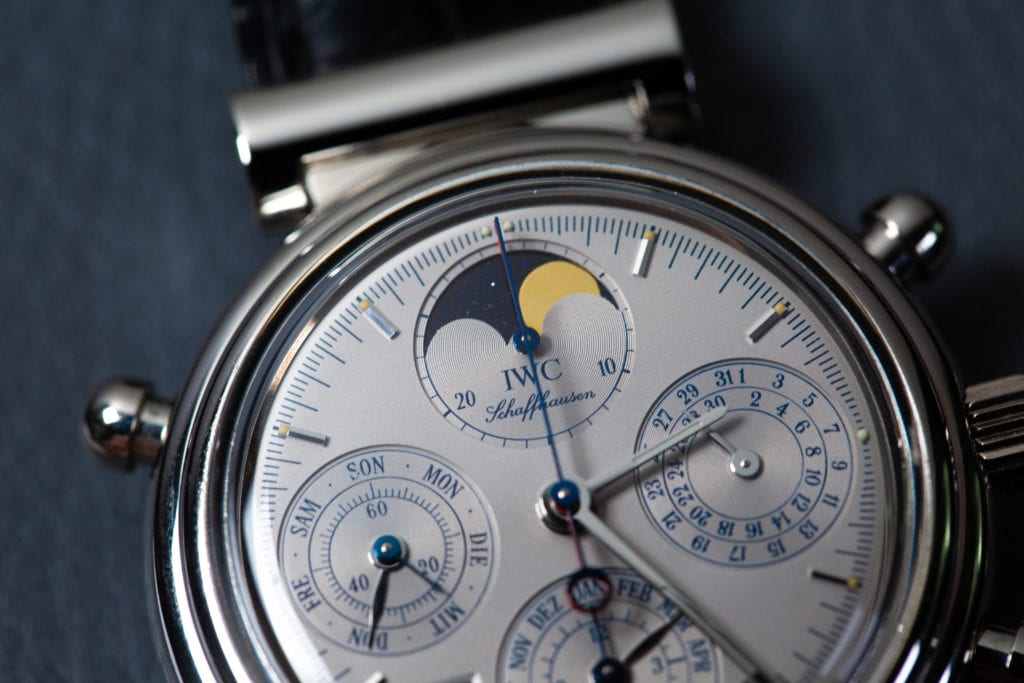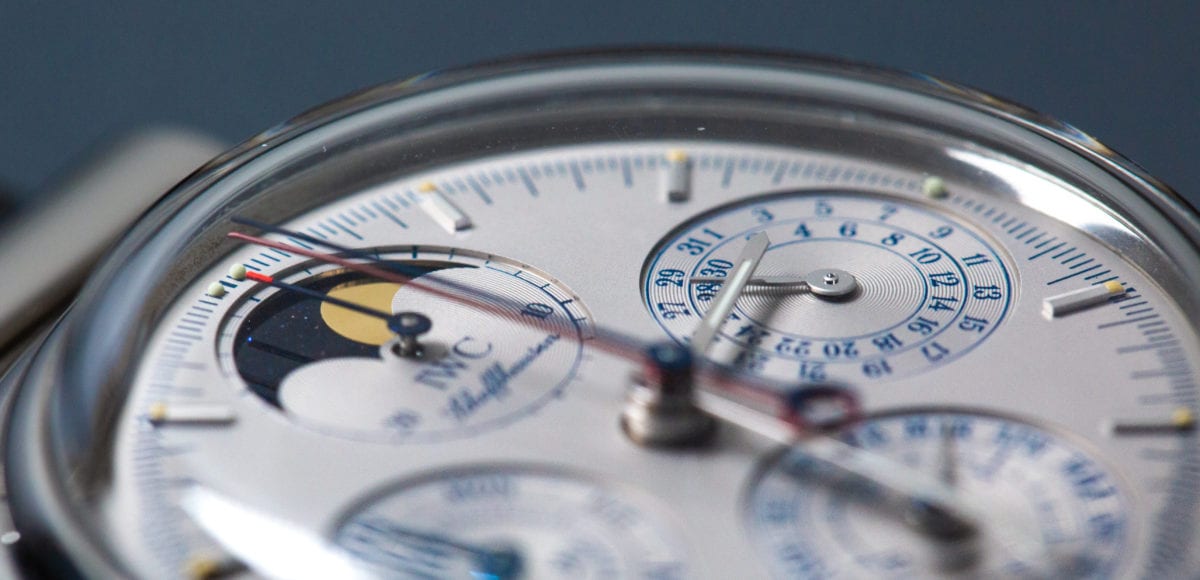Simplifying A Complex Complication
In the world of horology, there’s a decent amount of highly complex verbiage and mechanisms. You may be familiar with relatively common or popular complications, like the chronograph. However, when it comes to more technical functions, such as the rattrapante, you may feel a bit lost. You’re not alone. Even some avid watch enthusiasts struggle to recall the particulars of every piece of horological jargon. Certain terms are rooted in other languages, making them even more challenging to decipher. Here, we’re going to break down everything you need to know about this special type of chronograph movement.

What is a Rattrapante and How Does it Work?
Rattrapante comes from the French verb rattraper, which means to “catch up.” In horology, a rattrapante chronograph is also known as a split-seconds chronograph or double chronograph. One key feature differentiates this complication from a traditional chronograph mechanism. It allows the wearer to record multiple time intervals that start at the same time but don’t end at the same time. It’s particularly useful for timing events like different laps in a race.

To achieve this functionality, these chronographs come equipped with an additional seconds hand. This rattrapante hand is situated either directly above or below the standard seconds hand. With the additional hand, there’s also an additional pusher. To use the function, the wearer first engages the standard chronograph pusher. At this time, both seconds hands begin moving together. Then, when the wearer engages the rattrapante pusher, the rattrapante hand stops. However, if they press the rattrapante pusher again, the stopped rattrapante hand will “catch up” to the standard seconds hand.
Brief History of the Rattrapante

A Swiss watchmaker named Adolphe Nicole invented both the rattrapante and the chronograph reset function in the nineteenth century. However, the mechanism didn’t appear in a wristwatch until roughly a century later. In 1923, Patek Philippe unveiled the first rattrapante chronograph wristwatch. Years later in 1999, it sold at an Antiquorum auction for nearly $3 million. Early models such as this one were incredibly difficult to manufacture and therefore commanded high prices. They operated by a two column wheel system that was essentially two chronograph modules in a single watch. However, in 1992, a watchmaker named Richard Habring developed a new and more efficient method. He created a way to add a split-seconds mechanism to the Valjoux 7750 movement. It used a lever and cam system as opposed to the tedious column wheel system and revolutionized the rattrapante.
Notable Rattrapante Models
In addition to Patek, IWC, Omega, and Breitling are other notable manufacturers of the rattrapante. You can find it in models like the IWC Perpetual Rattrapante Limited Edition. The brand designed this unique variation of the iconic Da Vinci in celebration of the model’s tenth anniversary. They produced it in a limited run of just 500 pieces. It features a stunning platinum construction. Plus, in addition to the rattrapante, it boasts a moon phase and perpetual calendar complications.

Another example is the Omega Speedmaster Rattrapante Broad Arrow. This model incorporates the charm of the original “Broad Arrow” Speedmaster with the enhanced technology of the complication. It showcases an inverted panda dial and tachymeter scale around the bezel, another hallmark of the Speedy. Last but not least, there’s the Breitling Navitimer Rattrapante. In typical Breitling fashion, it boasts a massive, oversized 45mm case. This model was particularly special when it first debuted at Baselworld in 2017. It marked the first time that the brand made the complication entirely in-house.
Get More Articles Like This in Your Inbox
We're constantly creating great content like this. So, why not get it delivered directly to your inbox? By subscribing you agree to our Privacy Policy but you can unsubscribe at any time.






